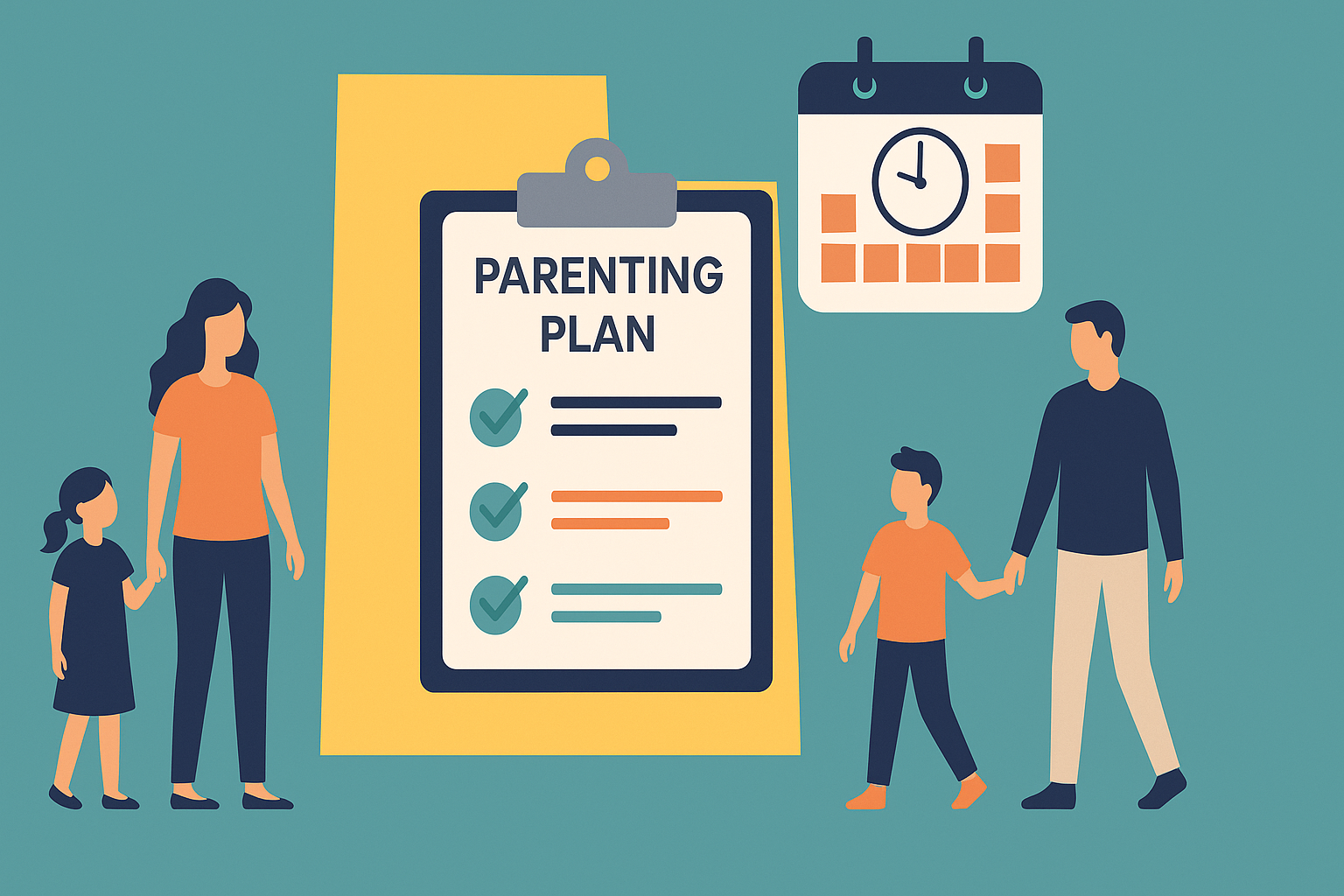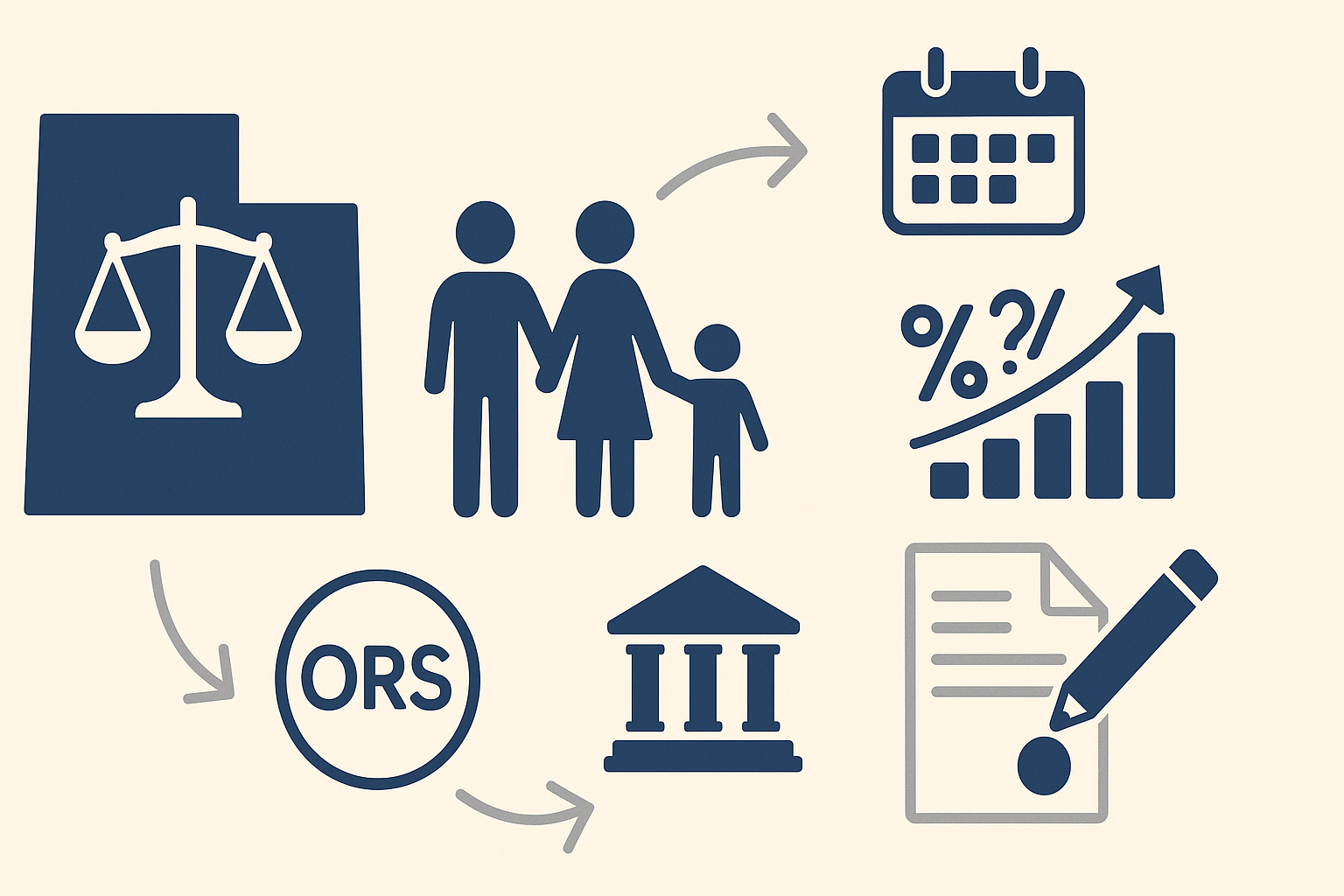When Utah parents separate or divorce, one of the most important steps is creating a parenting plan that supports their children’s stability and wellbeing. A good plan sets expectations, reduces conflict, and keeps the focus on the child.
This guide explains how parenting plans work under Utah law, what they must include, and how to create a schedule that meets both legal and family needs.
Understanding Parenting Plans in Utah
Under Utah family law, a parenting plan is a written agreement that outlines how parents will share time and make decisions for their child after separation or divorce. Parenting plans are required in any Utah case involving joint legal or joint physical custody.
What a parenting plan typically covers
Physical custody and schedules where the child lives and when.
Decision making authority how parents make choices about schooling, healthcare, and activities.
Dispute resolution how disagreements will be handled if they arise.
Watch: Utah Parenting Plan Overview
Utah Parenting Plan: Custody Overview and What to Include – review of what a Utah parenting plan should cover under state law.
Key Utah Laws and Definitions
Parenting plans are governed primarily by Utah Code § 30-3-10.8 and related custody statutes. Courts favor arrangements that serve the best interests of the child, considering each parent’s involvement, the child’s needs, and the ability to cooperate.
Important terms to know
Legal custody who makes important decisions for the child.
Physical custody where the child primarily lives.
Parent time the schedule for when each parent spends time with the child. Utah provides minimum parent time schedules based on age.
Watch: What to Include in a Parenting Plan
Child Parenting Plan – Utah Divorce Attorney explains what should be included in your decree when children are involved in Utah.
How Parenting Plans Are Created
By Agreement
Most parents work together sometimes through mediation to design a plan that fits schedules and the child’s routine.
By Court Order
If parents cannot agree, the court decides based on evidence and recommendations, often from evaluators or guardians ad litem. Once approved, the plan becomes part of the final custody order and is enforceable.
Watch: How to Fill Out the Utah Parenting Plan
How To Fill Out The Parenting Plan – basics of creating a parenting schedule and plan.
What to Include in a Utah Parenting Plan
Weekly and holiday schedules pick up and drop off times, holidays, school breaks, and exchange locations.
Decision making authority how parents share responsibility for medical care, schooling, religion, and extracurriculars.
Communication expectations for phone calls, texts, and updates about the child.
Transportation who handles transportation and where exchanges occur.
Conflict resolution mediation, written notice, or another agreed process to handle disagreements.
Common Mistakes to Avoid
Leaving holidays or travel undefined detail major dates and travel approvals to avoid disputes.
Not setting a change process outline how future changes will be handled and documented.
Using emotional language keep terms clear and workable for enforcement.
Ignoring real schedules align with work, school, and childcare realities.
How to Handle Changes Over Time
Parenting plans can be modified when there is a material and substantial change in circumstances such as relocation, job changes, or new child needs. Flexibility is encouraged, but document agreements and seek court approval for major changes.
Building a Schedule That Works for Your Family
Every family is different. Many use alternating weeks, 2-2-3, or 3-4-4-3 rotations. The goal is a predictable, child centered plan that fits age, school, and emotional needs.
Talk to Gibb Law About Your Parenting Plan
Have questions about custody, parent time, or modifying an existing plan? Our family law team can help you build a stable, child focused schedule.
Get Guidance


